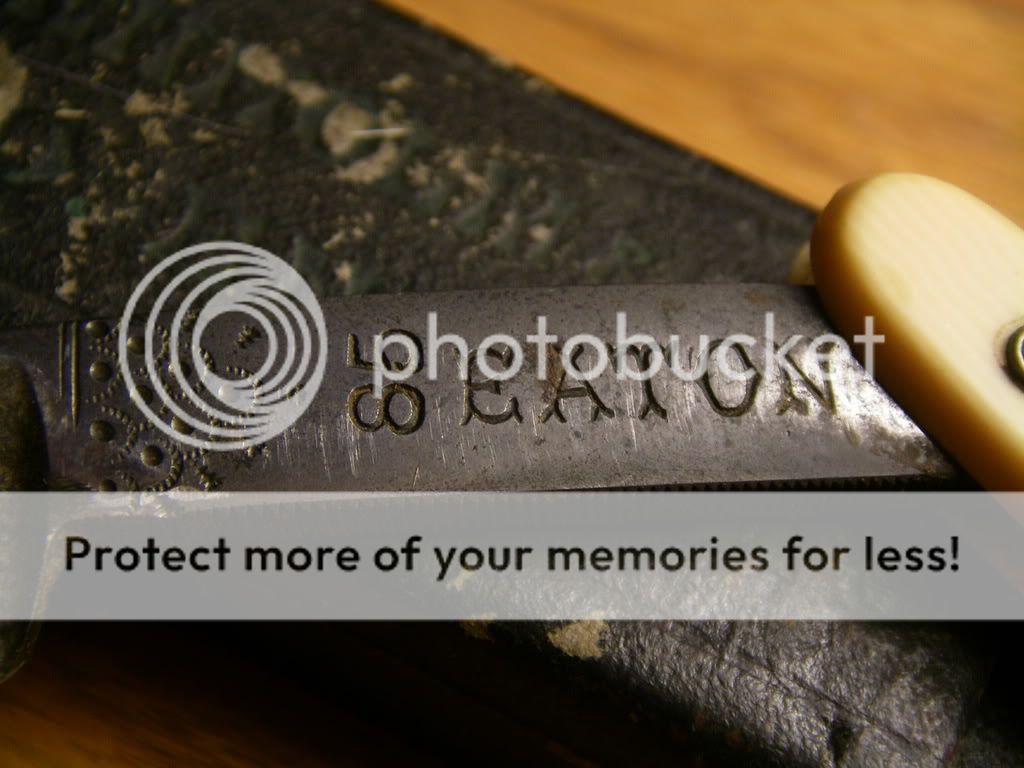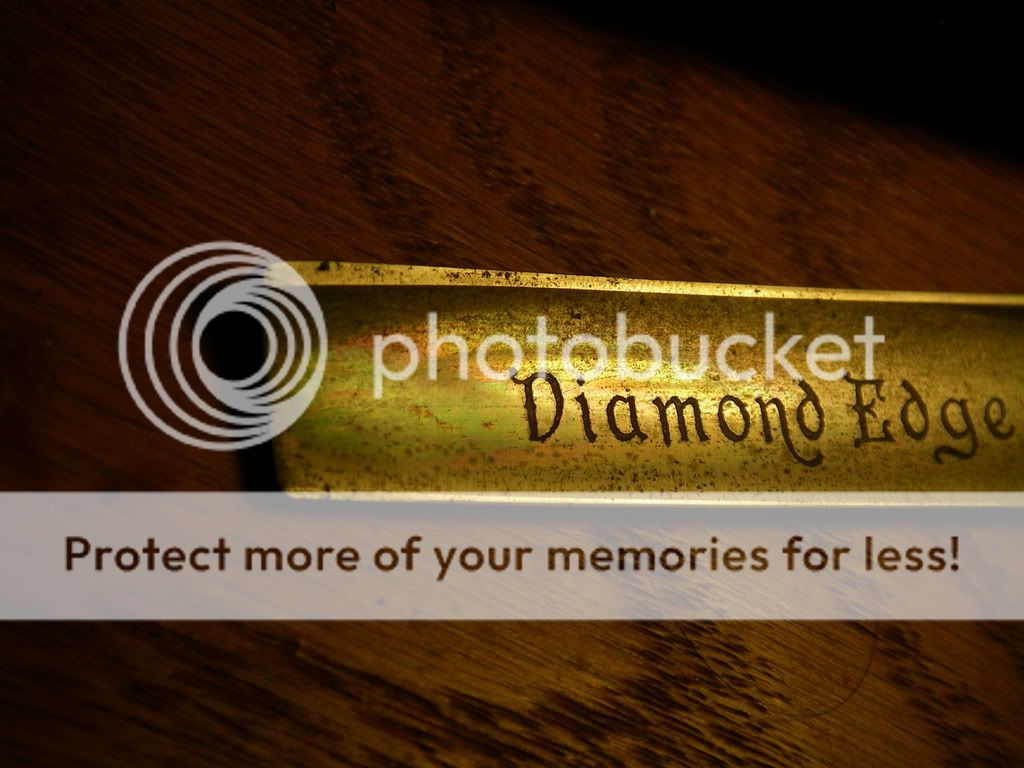the blade appears to be handmade, and is definitely hand stamped(the letters have very inconsistent depths, and the stamping of the pattern distorted the grooves filed or cut into the bottom.
they are definitely not done by a machine. There is this incredible rainbow hue that is impossible to photograph well, I'll be damned if I can figure out what causes it, it is not an oil at any rate. None of my teachers can figure it out either(I'm in a blacksmithing program)
I wonder also about the handle, from written descriptions of ivory I think it could be that, the pattern appears very much like woodgrain, but is very hard to photograph too, although the grain is fine and slightly wavy, and runs all the way through, there apear to be approx 3 layers lines in the thickness of the handle, and tons more across.
the handle is stiffer then my black plastic ones but I suppose it could be a different type of plastic.
The spacer is a soft metal, easily scratched with a fingernail, very dull, maybe lead?
It's a cool razor






they are definitely not done by a machine. There is this incredible rainbow hue that is impossible to photograph well, I'll be damned if I can figure out what causes it, it is not an oil at any rate. None of my teachers can figure it out either(I'm in a blacksmithing program)
I wonder also about the handle, from written descriptions of ivory I think it could be that, the pattern appears very much like woodgrain, but is very hard to photograph too, although the grain is fine and slightly wavy, and runs all the way through, there apear to be approx 3 layers lines in the thickness of the handle, and tons more across.
the handle is stiffer then my black plastic ones but I suppose it could be a different type of plastic.
The spacer is a soft metal, easily scratched with a fingernail, very dull, maybe lead?
It's a cool razor






Last edited:

